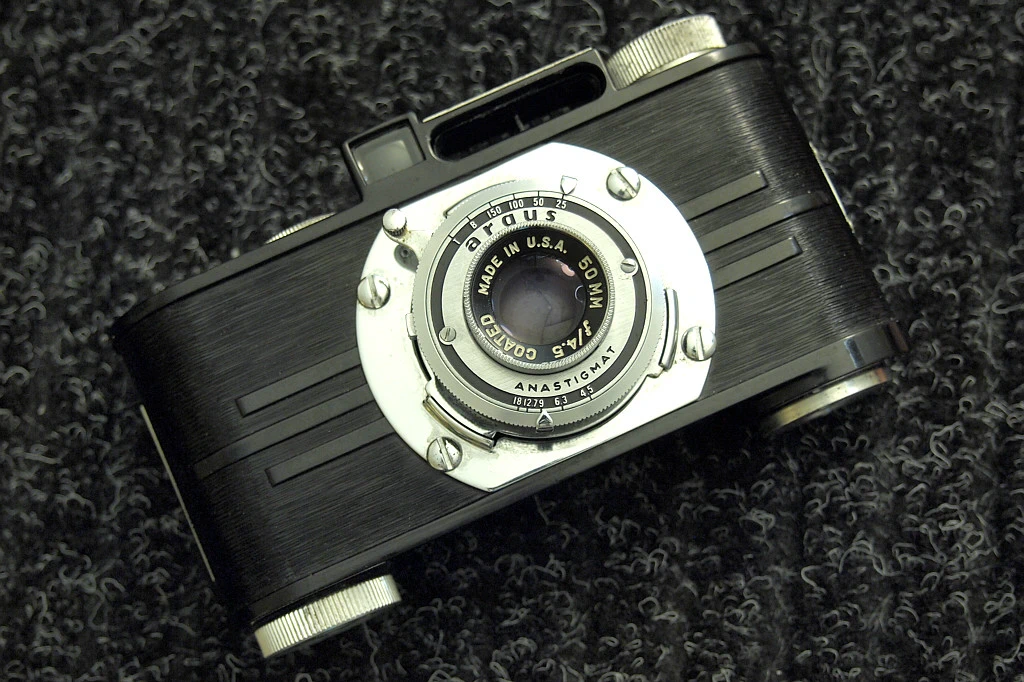
I received this little gem as a parting gift from a colleague. More than a year passed before I had a chance to clean it up and give it a go.
The camera came from the company that made the famed C3, which is affectionately known as “The Brick.”
Argus, based in Ann Arbor, Mich., produced this model from 1939 to 1950, which means that there should be plenty of them on the used market today.
| QUICK INFO | |
| Body, film | Bakelite with flat metal back, 35mm |
| Shutter | Leaf shutter |
| Meter | Extinction |
| Years made | 1939-50 |
| Photo quality | Average |
| Ergonomics | Average |
The camera features a collapsible lens mounted at the end of a spring-loaded tube. It reminds me a bit of the Zeiss Ikon Kolibri.
The coated 50mm Anastigmat lens is set in a four-speed shutter. The aperture scale has markings for f/4.5, 6.3, 9, 12.7 and 18.
My original thought was that this was a fixed-focus lens optimized for a distance of 12-15 feet. However, I was told that if you leave the lens collapsed, it provides for infinity focus. I haven’t run more film through the camera, so I’m not able to confirm this, although I have no reason to think that this wouldn’t be true.
Like most cameras with front-mounted shutter releases, you should be careful not to move the camera when releasing the shutter. Because this is a non-tensioning shutter, it is a bit more heavily sprung, so you really should be careful when releasing the shutter. There is no double-exposure prevention. It would be wise to have a standard procedure for these kinds of cameras, and that means all camera makers.
By the way, the shutter speeds are 25, 50, 100 and 150, plus B and T.
The front of the camera is plastic, possibly bakelite, with the rounded corners. The back of the camera is flat — a trait shared by other U.S.-designed cameras.
This camera has an extinction meter, but my camera lacks the slider. Oh well, I’ll just use a handheld meter.
REPAIR NOTES: I cleaned the bakelite body with a damp cloth and some dishwashing soap. Some lighter fluid and paper towels took care of removing grime on the metal parts. The viewfinder was very dirty. I carefully removed the small snap ring that holds the rear eyepiece lens. And the front viewfinder lens is held in place by a small metal frame that presses into the viewfinder opening. The lens cleaned up nicely on this camera, and luckily the shutter was running fine, although I would expect it to be simple to clean this shutter.